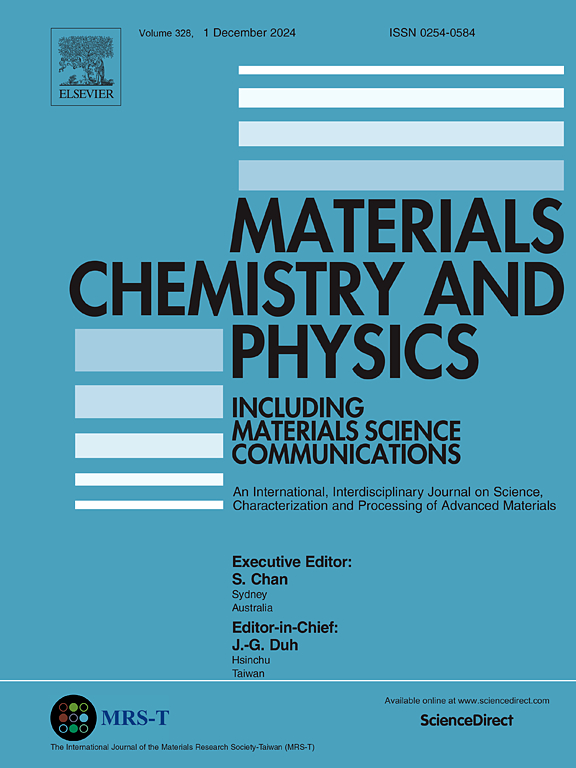Luminescence and structural insights of β-Ca2SiO4:Pr3+ Phosphor: Applications towards TL dosimetry and solid state lighting
IF 4.3
3区 材料科学
Q2 MATERIALS SCIENCE, MULTIDISCIPLINARY
引用次数: 0
Abstract
Trivalent praseodymium (Pr³⁺) doped β-Ca₂SiO₄ (β-CSO:Pr³⁺) phosphors are successfully synthesized via the conventional solid-state reaction method. This sustainable approach utilized SiO₂ extracted from sugarcane bagasse and CaO derived from eggshells (ES). The thermoluminescence (TL) properties of un-doped and β-CSO:Pr³⁺ phosphors are evaluated under γ-irradiation doses ranging from 0.01 Gy to 5 kGy. The TL glow curves of β-CSO:3Pr³⁺ phosphors exhibited prominent peaks at 400 K and 550 K. Activation energy values, determined using CGCD and Chen's peak methods, ranged from 0.5 to 2.5 eV. The incorporation of Pr³⁺ ions introduced deeper traps and significantly enhanced the material's thermal stability. TL reusability measurements showed a standard deviation of less than 5 %, demonstrating consistent and reliable performance over multiple cycles. Deconvolution of the TL glow curves identified six distinct peaks in the un-doped sample, while the Pr³⁺ doped sample displayed a more intricate trap structure with four peaks, indicating the introduction of new or modified trapping sites due to Pr³⁺ doping. The Figure of Merit (FOM) values derived from the deconvolution analysis are all below 1.58 %, signifying an excellent fit between the observed and modelled TL signals. These findings establish β-CSO:3Pr³⁺ phosphors as robust candidates for radiation dosimetry, offering enhanced sensitivity, stability, and adaptability across various dosimetric applications. The excitation spectrum included a host-related excitation band (200–300 nm) and f-f transition bands of Pr³⁺ (440–500 nm), both of which align with commercially available blue-emitting LED chips. Upon excitation with UV (∼247 nm) and blue light (∼457 nm), the phosphors emitted red light primarily from the ³P₀ state of Pr³⁺ ions, with the dominant transition being ³P₀→³F₂ (∼653 nm). The optimal concentration of Pr³⁺ is determined to be 3 mol%, beyond which concentration quenching occurred due to d-d interactions. Furthermore, the β-CSO:3Pr³⁺ phosphors exhibited a color purity of 88.1 %, an internal quantum efficiency (IQE) of 92.51 %, a high color rendering index (CRI) of 91, and a correlated color temperature (CCT) of 5162 K. These results highlight the promising potential of the synthesized nanorods for use in TL dosimetry and solid-state lighting applications.

求助全文
约1分钟内获得全文
求助全文
来源期刊

Materials Chemistry and Physics
工程技术-材料科学:综合
CiteScore
8.70
自引率
4.30%
发文量
1515
审稿时长
69 days
期刊介绍:
Materials Chemistry and Physics is devoted to short communications, full-length research papers and feature articles on interrelationships among structure, properties, processing and performance of materials. The Editors welcome manuscripts on thin films, surface and interface science, materials degradation and reliability, metallurgy, semiconductors and optoelectronic materials, fine ceramics, magnetics, superconductors, specialty polymers, nano-materials and composite materials.
 求助内容:
求助内容: 应助结果提醒方式:
应助结果提醒方式:


